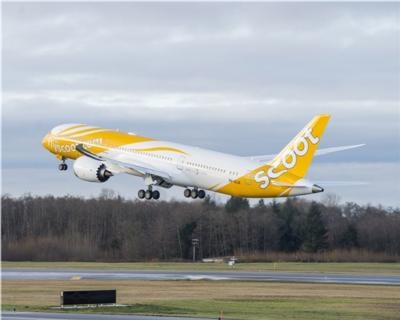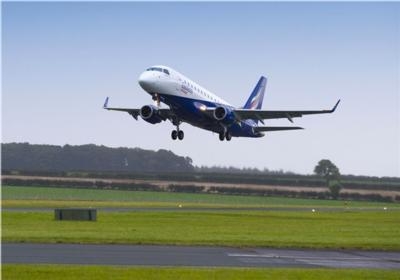Singapore Air Subsidiary Readies for Growth
Embraer announced that it has signed a Pool Program services agreement with Singapore Airlines low-cost subsidiary Scoot to support the airline’s incoming fleet of nine E190-E2 narrow-body airliners.

The term Pool Program denotes an arrangement whereby separate financings for obligors are combined into one or more pools for purposes of sale.
The Embraer-Scoot Pool Program provides access to component exchanges and repair services for more than three-hundred repairable parts to support Scoot’s Embraer aircraft. The program will allow the airline to minimize its upfront investment in high-value repairable inventories and resources, while taking advantage of Embraer’s technical expertise and extensive component repair service provider network. Currently, the described Pool Program supports more than sixty airlines worldwide.
Scoot COO Ng Chee Keong stated: “This strategic arrangement with Embraer will minimize maintenance delays for the E190-E2, essentially boosting operational readiness.”
Embraer president of services & support Carlos Naufel set forth: “Working hand-in-hand with Scoot, we are gearing up for the E190-E2 entry into service next year. We are leveraging on Singapore’s solid aviation ecosystem, and we look forward to Embraer’s modern, fuel-efficient E190-E2 taking to the skies in Scoot’s livery.”
Scoot launched its flight operation in June 2012 and merged with Tigerair Singapore—retaining the Scoot moniker in July 2017. To date, Scoot has carried over 74-million passengers, and operates a fifty-plus-aircraft fleet comprising widebody Boeing 787 Dreamliners and single-aisle Airbus A320 family aircraft. Scoot plans, by 2024, to add the Embraer E190-E2 to its fleet. Currently, the air-carrier flies to 67 destinations across 15 countries and territories throughout the Asia-Pacific region, the Middle East, and Europe.
Embraer’s E-Jet family comprises two series: the smaller, base-model E170 and E175 jets, and the stretched E190 and E195 aircraft. The E170 and E175 share 95% commonality, as do the E190 and E195; the two families share near 89% commonality, as evinced by their identical fuselage cross-sections and avionics.

To the subject of powerplants, the E170 and E175 are powered by General Electric’s 14,200-lbf CF34-8E turbofan engine, while the stretched E190 and E195 make use of the 20,000-lbf General Electric CF34-10E mill. The noise-signatures and emissions of both engines exceed the requirements established by the International Civil Aviation Organization (ICAO). Ergo, E-Jet operators retain the ability to service noise-sensitive airports such as London City (LCY), Teterboro (TEB), John Wayne (SNA), Santa Monica (SMO), and Naples, Florida (APF).
To date, Embraer has logged orders for north of 1,900 E-Jets from more than one-hundred customers. Presently, no fewer than eighty airlines operate Embraer E-Jets.
Singapore is the nerve center for Embraer’s Asia Pacific services and support operations. In addition to personnel based in Singapore, the company has a regional distribution center within Changi Airport’s free-trade zone. Recently, Embraer and CAE announced the establishment of a state-of-the-art E2 full flight simulator and pilot training enterprise in Singapore slated to commence training events in 2023. The full flight simulator will be based at the Singapore-CAE Flight Training Centre located at SIA Training Centre.
 Senator Pushes FAA to Accelerate Rocket Launch Licensing
Senator Pushes FAA to Accelerate Rocket Launch Licensing Classic Aero-TV: RJ Gritter - Part of Aviations Bright New Future
Classic Aero-TV: RJ Gritter - Part of Aviations Bright New Future Aero-FAQ: Dave Juwel's Aviation Marketing Stories -- ITBOA BNITBOB
Aero-FAQ: Dave Juwel's Aviation Marketing Stories -- ITBOA BNITBOB ANN's Daily Aero-Linx (10.27.24)
ANN's Daily Aero-Linx (10.27.24) ANN's Daily Aero-Term (10.27.24): Clearance Void If Not Off By (Time)
ANN's Daily Aero-Term (10.27.24): Clearance Void If Not Off By (Time)




